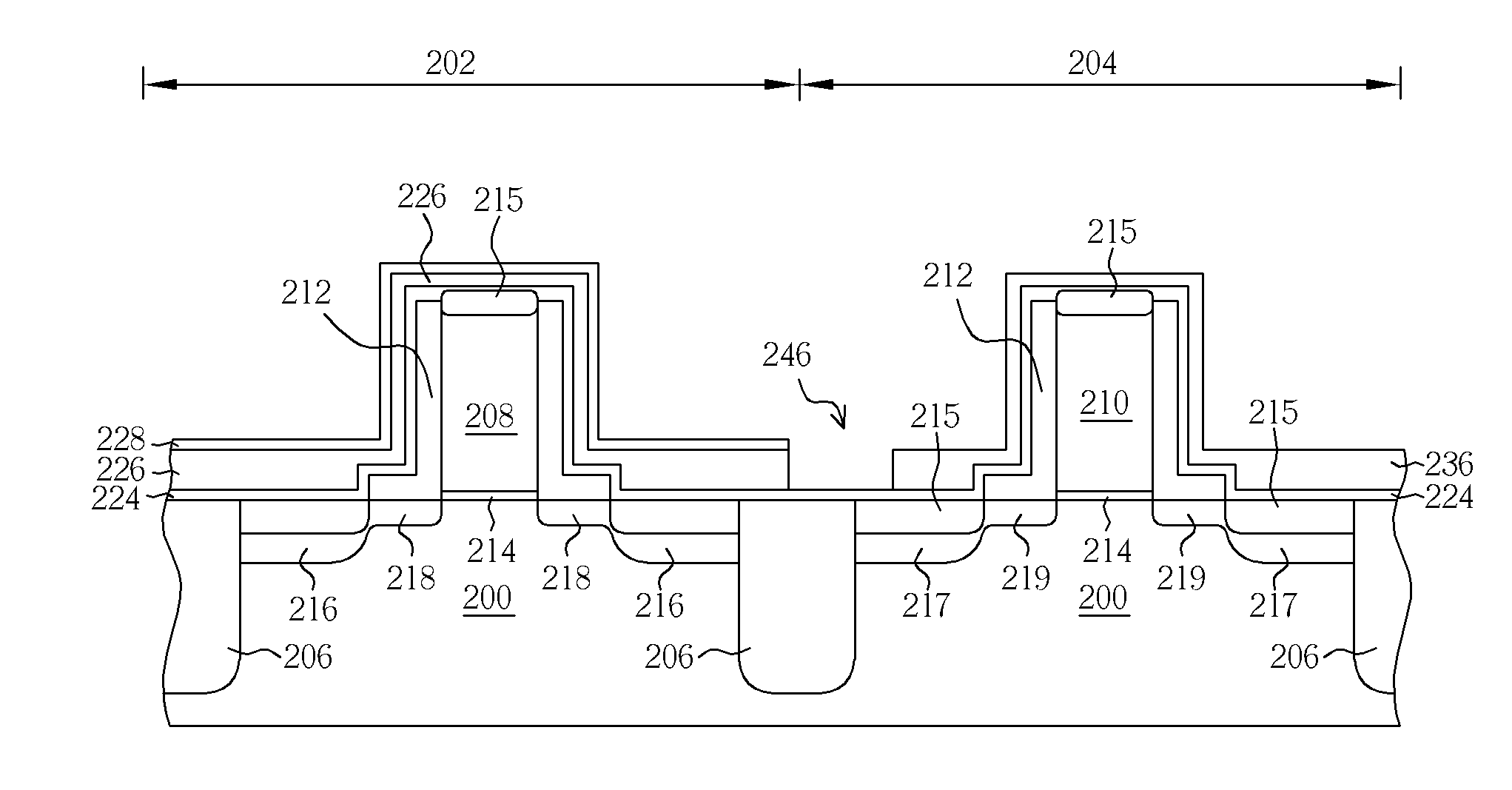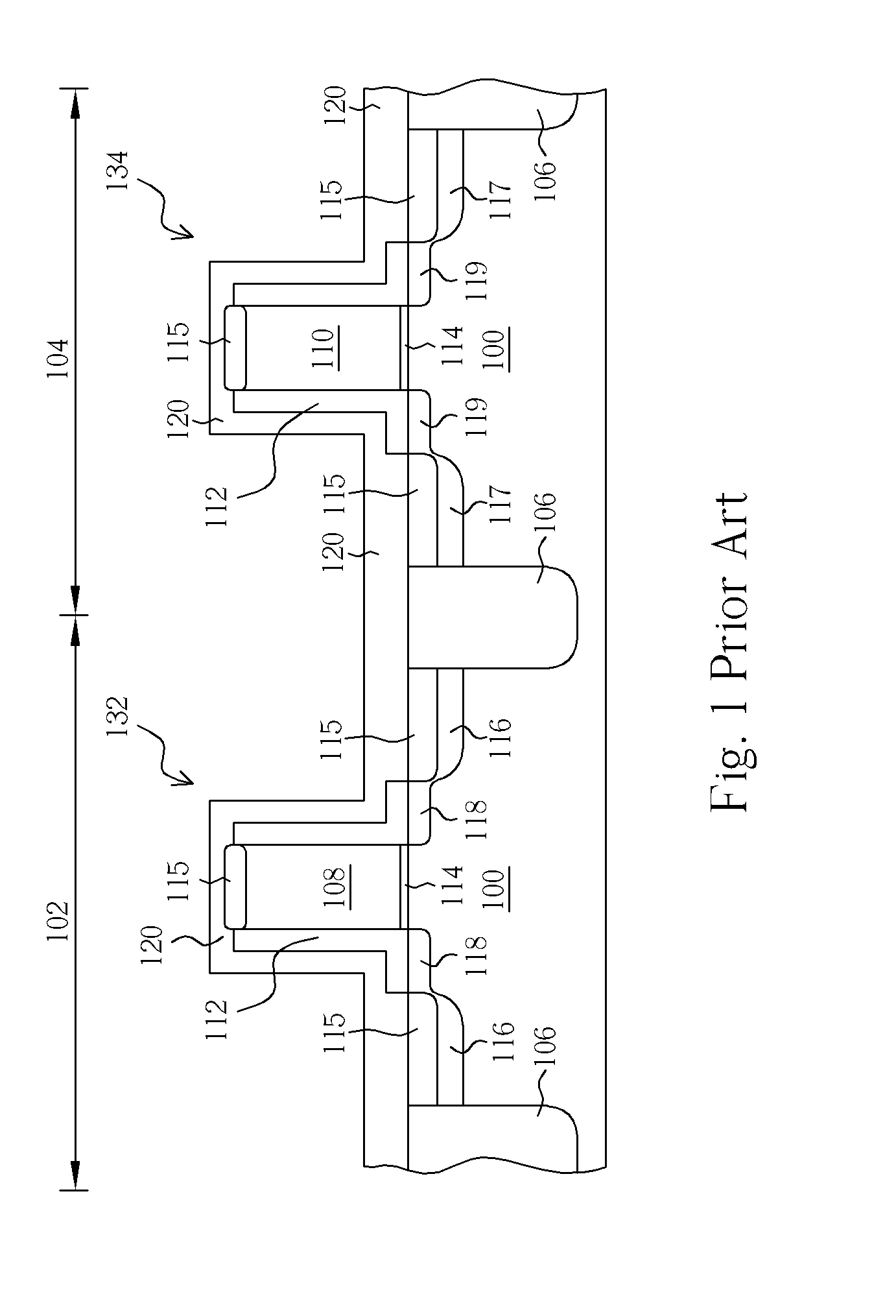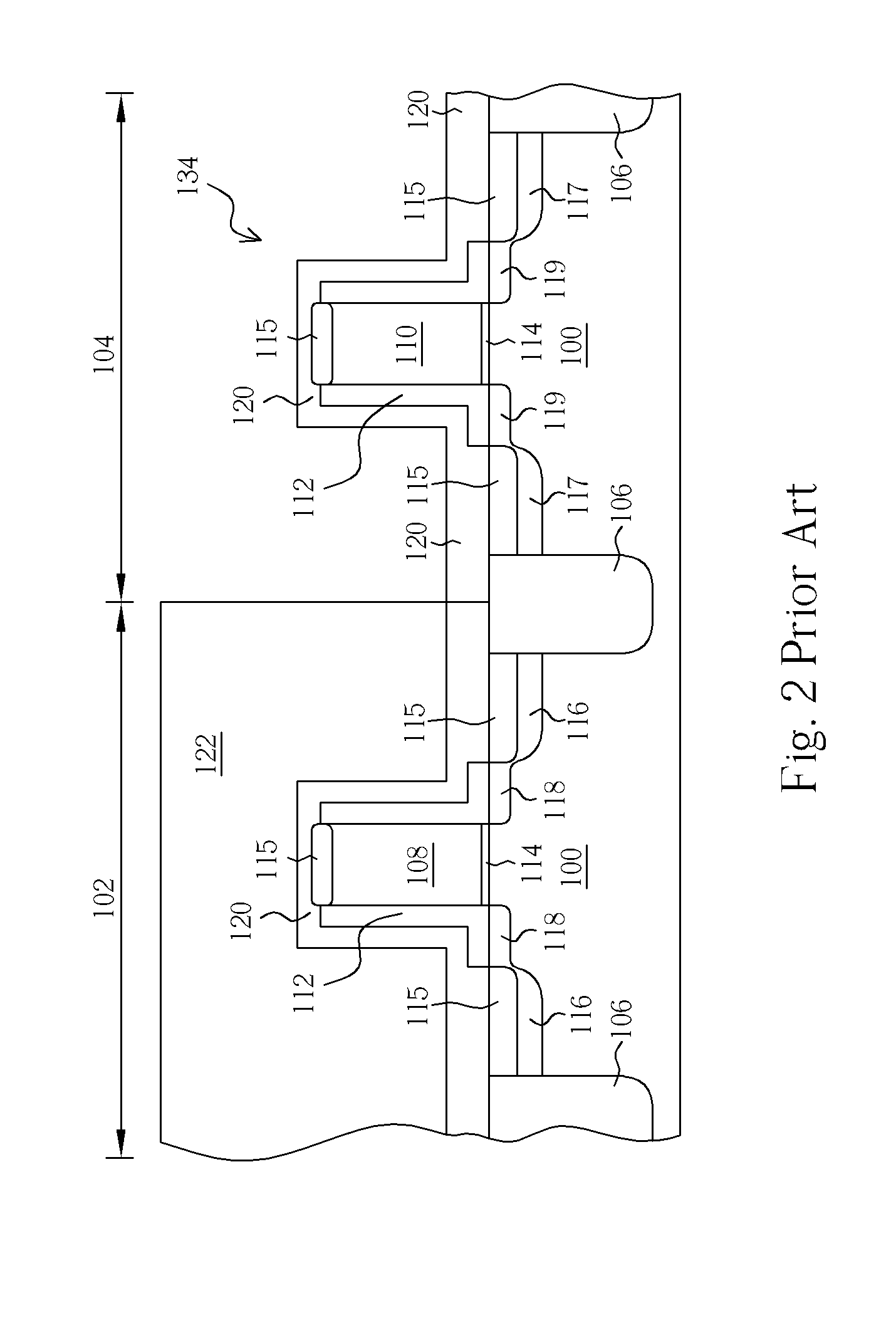Method for fabricating strained-silicon CMOS transistor
a technology of strained silicon and cmos, which is applied in the direction of electrical transducers, semiconductor devices, transducer details, etc., can solve the problems of affecting the yield of fabricating contact holes in the later process, and the defect of the device, so as to achieve the effect of easy control of the magnitude of the etching process
- Summary
- Abstract
- Description
- Claims
- Application Information
AI Technical Summary
Benefits of technology
Problems solved by technology
Method used
Image
Examples
Embodiment Construction
[0025]Please refer to FIGS. 7-13. FIGS. 7-13 are perspective diagrams illustrating a method for fabricating dual contact etch stop layer on a strained-silicon CMOS transistor according to the present invention. As shown in FIG. 7, a semiconductor substrate 200 having an NMOS region 202 and a PMOS region 204 is provided, in which the NMOS region 202 and the PMOS region 204 are divided by a shallow trench isolation 206. Each of the NMOS region 202 and the PMOS region 204 includes a gate structure. The NMOS gate structure includes an NMOS gate 208 and a gate dielectric 214 disposed between the NMOS gate 208 and the semiconductor substrate 200. The PMOS gate structure includes a PMOS gate 210 and a gate dielectric 214 disposed between the PMOS gate 210 and the semiconductor substrate 200. The sidewall of the NMOS gate 208 and the PMOS gate 210 includes a liner 212 composed of silicon dioxide or silicon nitride.
[0026]Next, an ion implantation process is performed to form a source / drain r...
PUM
 Login to View More
Login to View More Abstract
Description
Claims
Application Information
 Login to View More
Login to View More - R&D
- Intellectual Property
- Life Sciences
- Materials
- Tech Scout
- Unparalleled Data Quality
- Higher Quality Content
- 60% Fewer Hallucinations
Browse by: Latest US Patents, China's latest patents, Technical Efficacy Thesaurus, Application Domain, Technology Topic, Popular Technical Reports.
© 2025 PatSnap. All rights reserved.Legal|Privacy policy|Modern Slavery Act Transparency Statement|Sitemap|About US| Contact US: help@patsnap.com



